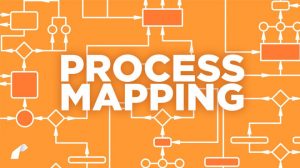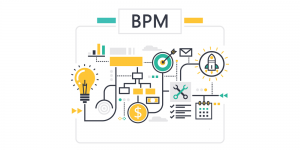Business Process Re-engineering, also known as BPRE, is a business management method that reconstructs a business process to increase product or service quality while reducing long-term costs.
Whereas BPM, or Business Process Management, is the strategic planning of workflow maintenance and control to increase the efficiency of existing processes and the overall organization through a long-term string of procedures that serves as the backbone for all business operations.
This article compares and contrasts BPR with BPM in business process improvement. But first, let’s define the two terms in particular.
What is Business Process Reengineering?
Business process reengineering is often performed at the outset of a digital transformation. It focuses on reconstructing a company’s process to increase its robustness while minimizing needless long-term expenditures.
What is Business Process Management?
Business process management is a technique businesses use to manage their processes. It is the discipline of examining how you do things from a process aspect and utilizing data to enhance operations. It is a long-term communal process that serves as the foundation for all of your organization’s commercial activities.
Differences Between The Two!
In some aspects, BPR is a continuation of, or a subset of, BPM. Let’s take a look at some key distinctions to be aware of.
-
Systematic vs. Managerial Outlook
A BPR strategy strives to be as lean and efficient as feasible. The idea is to eliminate any aspect of a work that does not serve a proper commercial function. Team members determine their intended future state and implement the necessary process modifications. BPM, on the other hand, does not prioritize discarding functions, even if they are deemed unimportant. This strategy does not rebuild or reconstruct a corporation’s working methods or procedures. Instead, a more administrative approach is required to guarantee that present systems are optimized as needed.
-
Single Task vs. Entire Strategy
Organizations using BPR are searching for methods to improve the efficiency of a particular activity or workflow phase. For example, when a lead becomes a client, they may delve into the conversations between the sales and project management teams. BPM, on the other hand, is more concerned with the long term. Instead of concentrating on a single task, you’re searching for methods to enhance your company’s procedures. The emphasis is on observing and retaining the existing state rather than recreating a specific process flow.
-
Changeable vs. Static Process Flows
A BPM strategy can only function with a pre-written process flow. This means it must work within the restrictions of any existing management techniques. This method does not necessarily alter a process. You’re merely searching for ways to improve its effectiveness. Compared with BPR, you examine each process’s phases and propose ideas to restructure them.
To make it simpler to understand,
ERP Business Process Reengineering
|
ERP Business Process Management
|
In Summation!
When comprehending business process reengineering vs. business process management, remember that both strategies are frequently essential for long-term firm performance.
If you’re about to embark on a digital transformation, BPR is an essential first step. Over time, you may adopt a complete approach by concentrating on BPM and keeping those new processes streamlined.
Our ERP development experts at Connected IT Consulting can assist both projects. Please connect with us to schedule a quick ERP consultation.



